Home>Storage Ideas>Bedroom Storage>The Ultimate Guide To Removing Every Type Of Fabric Stain From Clothing


Bedroom Storage
The Ultimate Guide To Removing Every Type Of Fabric Stain From Clothing
Modified: February 11, 2024
Discover the ultimate guide to removing any fabric stain from clothing with our expert tips and tricks. Get rid of pesky bedroom-storage stains for good!
(Many of the links in this article redirect to a specific reviewed product. Your purchase of these products through affiliate links helps to generate commission for Storables.com, at no extra cost. Learn more)
Introduction
Welcome to the ultimate guide to removing every type of fabric stain from clothing. We all know the frustration of accidentally spilling something on our favorite shirt or dress. But fear not! With the right techniques and a little bit of know-how, you can save your beloved garments from permanent stains and extend their lifespan.
Stains can come in various forms – from food and beverages to oil and grease, and even ink and makeup. Each type of fabric requires specific treatment to effectively remove the stain without causing further damage. In this guide, we will explore the best stain removal practices for different fabric types, including cotton, polyester, silk, wool, denim, linen, nylon, rayon, acrylic, leather, suede, velvet, satin, and cashmere.
Before we dive into the specifics, let’s cover some general stain removal tips that apply to all fabric types:
General Stain Removal Tips:
- Act fast: The sooner you address the stain, the easier it will be to remove. Don’t let the stain sit for too long, as it may become more stubborn.
- Blot, don’t rub: When dealing with wet stains, gently blot the area with a clean cloth or paper towel. Rubbing can cause the stain to spread.
- Test on an inconspicuous area: Before applying any stain removal method, test it on a hidden part of the garment to ensure it doesn’t cause any discoloration or damage.
- Follow the care instructions: Always check the garment’s care label and follow the recommended cleaning instructions.
- Use mild detergents: Opt for gentle, non-bleach detergents to avoid damaging the fabric.
- Work from the outside in: When applying stain removers or cleaners, always work from the outer edge of the stain towards the center. This helps prevent spreading.
- Avoid heat: Heat can set stains, so it’s best to avoid using hot water or high-temperature drying methods until the stain is completely gone.
- Patience is key: Some stains may require multiple treatments and a bit of patience. Don’t give up too soon!
Now that we have covered the general tips, it’s time to tackle each fabric type and their specific stain removal techniques. Whether you spilled coffee on your silk blouse or got grass stains on your denim jeans, we’ve got you covered.
Key Takeaways:
- Delicate fabrics like silk and cashmere require gentle, prompt stain removal with mild detergents and cold water to preserve their luxurious feel and appearance.
- Specific stain removal methods tailored to each fabric type, from cotton to suede, are essential for effectively eliminating stains without causing damage.
General Stain Removal Tips
When it comes to removing stains from clothing, there are some general tips that apply to almost all fabric types. By following these guidelines, you can increase your chances of successfully removing stains without causing damage to your garments.
Act quickly: The key to effective stain removal is to act fast. The longer a stain sits on the fabric, the harder it becomes to remove. As soon as a spill occurs or a stain is noticed, take action immediately.
Blot, don’t rub: When dealing with wet stains, avoid rubbing the fabric vigorously. Instead, gently blot the stain with a clean cloth or paper towel. Rubbing can push the stain deeper into the fabric fibers and cause it to spread.
Test on an inconspicuous area: Before applying any stain removal product or solution, it’s important to test it on a hidden or inconspicuous area of the garment. This will help you ensure that the product doesn’t cause any damage or discoloration to the fabric.
Follow garment care instructions: Always check the care label on your clothing to determine the recommended cleaning instructions. Different fabrics have different care requirements, and following them will help you avoid unintentional damage while attempting to remove stains.
Use mild detergents: When treating stains, opt for mild detergents that are suitable for the fabric type. Harsh chemicals and bleach can damage and weaken the fibers, causing color fading or even holes in the fabric.
Work from the outside in: When applying stain removers or cleaners, start from the outer edge of the stain and work your way towards the center. This prevents the stain from spreading and affecting a larger area of the garment.
Avoid heat until the stain is gone: Heat can set stains, making them even more difficult to remove. Avoid using hot water or high-temperature drying methods until the stain has been completely eliminated.
Be patient: Some stains may require multiple treatments or a combination of different stain removal methods. It’s important to be patient and persistent, allowing sufficient time for the stain to lift from the fabric.
By keeping these general stain removal tips in mind, you will be better equipped to tackle stains on various fabric types. However, it’s important to remember that different fabrics have different characteristics and may require specific treatment methods. In the following sections, we will delve into the stain removal techniques for specific fabric types, including cotton, polyester, silk, wool, denim, linen, nylon, rayon, acrylic, leather, suede, velvet, satin, and cashmere.
Removing Stains from Cotton Clothing
Cotton is a versatile and durable fabric that is commonly used in clothing. It is also relatively easy to clean and remove stains from. Here are some tips and techniques for removing stains from cotton clothing:
1. Pre-treat the stain: Before washing the garment, pre-treat the stain by applying a small amount of liquid laundry detergent directly to the affected area. Gently rub the detergent into the stain using your fingers or a soft brush.
2. Soak in cold water: If the stain is particularly stubborn, soak the cotton garment in cold water for about 30 minutes. This can help loosen the stain before washing.
3. Wash with a mild detergent: After pre-treating the stain, wash the cotton garment in the washing machine using a mild laundry detergent. Follow the care instructions on the garment for the appropriate water temperature.
4. Use bleach for white cotton: If the cotton garment is white, you may consider using chlorine bleach to remove the stain. Dilute the bleach according to the instructions on the bottle and add it to the wash cycle. Be cautious when using bleach, as it can weaken the fabric if used excessively.
5. Sun-dry for additional stain removal: After washing, hang the cotton garment in direct sunlight. The natural bleaching properties of the sun can help further remove any lingering stains. However, be aware that excessive sunlight exposure can fade the fabric’s color over time.
Note: It’s important to handle and treat specific stains on cotton clothing differently. Here are a few common cotton stains and their respective removal methods:
– Food and beverage stains: For most food and beverage stains, blot up the excess and rinse the stain with cold water. Pre-treat with a stain remover or liquid laundry detergent before washing.
– Ink stains: Dab the stain with rubbing alcohol or an ink-removing product. Allow it to sit for a few minutes, then wash the garment as usual.
– Grease and oil stains: Cover the stain with baking soda or cornstarch and let it sit for a few minutes to absorb the grease. Brush off the powder and pre-treat the stain with a liquid laundry detergent before washing.
– Blood stains: Soak the garment in cold water, then apply hydrogen peroxide directly to the stain. Gently rub it in and wash the garment as usual.
Remember, always check the care label and follow the manufacturer’s recommendations when treating stains on cotton clothing. By using the right techniques and products, you can effectively remove stains and keep your cotton garments looking fresh and clean.
Removing Stains from Polyester Clothing
Polyester is a popular synthetic fabric known for its durability and wrinkle-resistant properties. Though it resists most stains, occasional spills and accidents may still occur. Here are some effective methods for removing stains from polyester clothing:
1. Act promptly: As with any fabric, it’s important to address the stain as soon as possible. Blot the stain gently with a clean cloth or paper towel to remove any excess liquid or residue.
2. Pre-treat the stain: Before washing the garment, pre-treat the stain by applying a small amount of gentle liquid detergent directly to the stained area. Gently rub the detergent into the fabric using your fingers or a soft brush.
3. Wash with care: Wash the polyester garment according to the care instructions on the label. Use a gentle cycle with cool or lukewarm water and a mild detergent formulated for delicate fabrics.
4. Avoid high heat: Polyester fabrics are sensitive to high heat, so it’s best to air dry or tumble dry on a low heat setting. Excessive heat can cause the fabric to shrink or become damaged.
5. Use stain-specific treatments: For specific types of stains on polyester clothing, there are additional treatments you can try:
– Oil-based stains: Apply a small amount of dishwashing liquid directly to the stain and gently rub it in. Allow it to sit for a few minutes before washing. Repeat if necessary.
– Food and beverage stains: Rinse the stain with cold water and apply a mixture of water and white vinegar to it. Let it sit for a few minutes, then wash the garment as usual.
– Ink stains: Dab the stain with rubbing alcohol or acetone (nail polish remover) using a clean cloth or cotton ball. Blot gently until the stain starts to fade, then wash the garment.
– Makeup stains: Gently scrape off any excess makeup using a blunt knife or spoon. Apply a small amount of mild liquid detergent to the stained area and gently rub it in. Wash the garment as usual.
It’s worth noting that while polyester is resistant to many stains, some substances like bleach, certain dyes, and strong chemicals may cause irreversible damage. Always check the care label and follow the cleaning instructions provided by the garment manufacturer.
By following these tips and techniques, you can effectively remove stains from your polyester clothing and keep them looking their best. Remember, prompt action and appropriate stain treatments are the keys to successful stain removal.
Removing Stains from Silk Clothing
Silk is a luxurious, delicate fabric that requires special care when it comes to stain removal. As a natural fiber, silk is prone to absorbing stains quickly. However, with the right techniques, you can effectively remove stains from silk clothing without causing damage to the fabric. Here’s how:
1. Act quickly: Silk stains should be addressed as soon as possible. Blot the stain gently with a clean, white cloth or paper towel to remove any excess liquid or residue. Avoid rubbing the stain, as it can spread and damage the fabric.
2. Test on an inconspicuous area: Before attempting any stain removal method, test it on an inconspicuous area of the garment, such as an inside seam or hem. This will help ensure that the treatment won’t cause any discoloration or damage to the fabric.
3. Use cold water: Silk is highly sensitive to heat, so it’s crucial to use cold water when treating stains. Hot water can cause silk to shrink and lose its luster.
4. Hand wash gently: Fill a basin or sink with cold water and add a small amount of mild detergent specifically formulated for delicate fabrics. Gently submerge the silk garment in the soapy water and swirl it around for a few minutes. Avoid excessive agitation, as it can cause the fabric to stretch or become distorted.
5. Rinse carefully: After washing, drain the soapy water and refill the basin with clean, cold water. Rinse the silk garment thoroughly to remove any remaining detergent. You may need to repeat this step a few times to ensure all soap residue is gone.
6. Treat specific stains: For different types of stains on silk clothing, here are some specific treatments you can try:
– Water-based stains: If it’s a water-based stain, such as coffee or tea, immediately blot the liquid with a clean cloth. Then, dampen a clean cloth with cold water and gently blot the stain from the outer edges toward the center.
– Grease and oil stains: Place a clean, absorbent material, like talcum powder, cornstarch, or baking soda, on both sides of the stained area. Let it sit for a few minutes to absorb the oil. Gently brush off the powder, then hand wash the garment as mentioned earlier.
– Ink stains: For ink stains, place a clean cloth underneath the stain to prevent it from spreading to other areas of the garment. Dab a cotton swab or soft cloth with rubbing alcohol or specialized ink remover and gently blot the stain. Rinse the area with cold water and wash the garment.
– Makeup stains: For makeup stains, treat them by gently blotting with a cloth dampened with cold water. Avoid rubbing, as it can push the makeup deeper into the fibers. If the stain persists, apply a small amount of mild liquid detergent directly to the stain and gently rub it in. Rinse and wash the garment afterward.
Note: If you’re unsure about removing a stain from silk clothing, it’s always best to seek professional assistance or take the garment to a reputable dry cleaner who specializes in silk garments.
With these tips, you can be well-equipped to tackle stains on your silk clothing and help maintain their beauty and elegance for years to come.
Removing Stains from Wool Clothing
Wool is a delicate and luxurious fabric known for its warmth and durability. However, when it comes to stain removal, wool requires gentle handling to prevent damage. Here are some effective methods for removing stains from wool clothing:
1. Act quickly: As with any fabric, it’s important to address the stain as soon as possible. Blot the stain gently with a clean cloth or paper towel to remove any excess liquid or residue. Avoid rubbing the stain, as it can cause the fabric to pill or become damaged.
2. Cold water soak: For fresh stains, soak the wool garment in cold water immediately. This can help loosen the stain before further treatment. Avoid using hot water, as it can cause wool to shrink and lose its shape.
3. Use mild detergent: When washing wool, always use a mild detergent specifically designed for delicate fabrics. Ensure that it does not contain any harsh chemicals or bleach. Gently hand wash the garment in cool water or follow the care instructions provided by the manufacturer.
4. Never wring or twist: After washing, avoid wringing or twisting the wool garment to remove excess water. Instead, carefully squeeze the water out or gently press the garment between two towels to absorb moisture.
5. Treat specific stains: There are several methods for treating specific stains on wool clothing:
– Food and beverage stains: Blot the stain with a clean cloth or paper towel to absorb any excess liquid. Mix a small amount of mild detergent with cold water and gently apply it to the stain, tapping and blotting it with a clean cloth. Rinse the area with cold water and pat dry.
– Ink stains: Dab the stain with a clean cloth soaked in rubbing alcohol or diluted white vinegar. Do not excessively wet the area. Blot gently until the ink starts to lift, then rinse with cold water and allow it to air dry.
– Grease and oil stains: Place an absorbent material, such as cornstarch or talcum powder, on both sides of the stained area and let it sit for a few minutes to absorb the oil. Brush off the powder and sponge the stain with a cloth soaked in warm, soapy water. Rinse the area with cool water and air dry.
– Blood stains: Blot the stain with a clean cloth soaked in cold water. Mix a small amount of mild detergent with cold water and gently apply it to the stain, tapping and blotting it with a clean cloth. Rinse with cold water and pat dry.
Note: It’s important to always read the care instructions on your wool garment and follow any specific stain removal guidelines recommended by the manufacturer. If you’re unsure about removing a stain from wool clothing, it’s best to seek professional assistance or consult a reputable dry cleaner specializing in wool garments.
By following these tips and techniques, you can effectively remove stains from your wool clothing while preserving its natural beauty and longevity.
Removing Stains from Denim Clothing
Denim is a sturdy and versatile fabric that is commonly used in jeans and other clothing items. It is known for its durability, but it is still susceptible to stains. Whether it’s an accidental food spill or a mark from outdoor activities, removing stains from denim clothing can be a relatively straightforward process. Here are some tips to help you effectively remove stains from denim:
1. Act quickly: As with any fabric, it’s important to tackle the stain as soon as possible. The sooner you address the stain, the easier it will be to remove. Blot the stain gently with a clean cloth or paper towel to soak up any excess liquid.
2. Pre-treat the stain: Before washing the denim garment, pre-treat the stain by applying a small amount of liquid laundry detergent or stain remover directly to the affected area. Gently rub the detergent or stain remover into the stain using your fingers or a soft brush.
3. Soak in cold water: Soaking the denim garment in cold water can help loosen stubborn stains. Fill a basin or sink with cold water and let the garment soak for about 30 minutes before laundering.
4. Wash with cold water and mild detergent: When washing denim clothing, use cold water and a mild detergent. Avoid using hot water, as it can cause the fabric to shrink or fade. Follow the care instructions provided by the manufacturer for the best results.
5. Treat specific stains: Different types of stains may require specific treatment methods:
– Food stains: For food stains, gently scrape off any excess residue, then pre-treat the stain with a mixture of equal parts dish soap and hydrogen peroxide. Let it sit for a few minutes before washing.
– Grease and oil stains: Cover the stain with an absorbent material, such as baking soda or cornstarch, and let it sit for a few minutes to absorb the grease. Brush off the powder and pre-treat the stain with a liquid laundry detergent or stain remover before washing.
– Ink stains: Dab the ink stain with a cotton ball or cloth soaked in rubbing alcohol. Blot gently until the ink starts to lift, then wash the garment as usual.
– Grass stains: Pre-treat grass stains by applying a mixture of equal parts water and white vinegar to the stain. Gently scrub the stain with a soft brush or toothbrush, then wash the garment as usual.
Note: Denim clothing, especially jeans, can fade over time. To preserve the color, turn the garment inside out before washing, and avoid over-washing and excessive use of harsh detergents.
By following these tips and techniques, you can effectively remove stains from your denim clothing and keep them looking fresh and vibrant.
Removing Stains from Linen Clothing
Linen is a lightweight and breathable fabric that is perfect for warm weather. However, it can be prone to stains due to its absorbent nature. Whether it’s a food spill or a mark from outdoor activities, it’s important to tackle stains on linen clothing as soon as possible to avoid them setting in. Here are some effective methods for removing stains from linen:
1. Act quickly: As with any fabric, it’s crucial to address the stain promptly. Blot the stain gently with a clean cloth or paper towel to remove any excess liquid or residue. Avoid rubbing the stain, as it can push it deeper into the fabric fibers.
2. Pre-treat the stain: Before laundering the linen garment, pre-treat the stain by applying a small amount of liquid laundry detergent or a stain remover directly to the affected area. Gently rub the detergent or stain remover into the stain using your fingers or a soft brush.
3. Soak in cold water: Fill a basin or sink with cold water and add a small amount of laundry detergent specially formulated for delicate fabrics. Place the linen garment in the soapy water and let it soak for about 30 minutes. This can help loosen the stain before washing.
4. Wash on gentle cycle: When washing linen clothing, use the gentle cycle on your washing machine and select cold water. It’s advisable to wash linen separately or with like colors to prevent color transfer. Use a mild detergent specifically formulated for delicate fabrics.
5. Air dry: After washing, air drying is the preferred method for linen clothing. Hang the garment on a clothesline or lay it flat on a clean surface. Avoid using a clothes dryer, as high heat can shrink or distort the fabric.
6. Treat specific stains: Different types of stains may require specific treatment methods when it comes to linen clothing:
– Food stains: Blot the food stain to absorb any excess liquid. Mix equal parts water and white vinegar, then gently dab the stain with a cloth soaked in the solution. Rinse with cold water and wash the garment as usual.
– Wine stains: Blot up as much of the wine as possible. Pour a small amount of club soda onto the stain and gently blot it with a cloth. Rinse with cold water and wash the garment according to care instructions.
– Ink stains: Dab the ink stain with rubbing alcohol using a clean cloth or cotton ball. Blot gently until the ink starts to lift, then rinse with cold water and wash the garment as usual.
– Makeup stains: Gently scrape off any excess makeup using a blunt knife or spoon. Apply a small amount of mild liquid detergent directly to the stained area and gently rub it in. Wash the garment as usual.
Note: Always check the care label and follow the manufacturer’s instructions for washing and treating stains on linen clothing. If unsure or if the stain persists, it’s recommended to seek professional assistance or consult a reputable dry cleaner.
With these tips and techniques, you can effectively remove stains from your linen clothing, allowing them to look their best and last for a long time.
Removing Stains from Nylon Clothing
Nylon is a strong and durable synthetic fabric that is known for its moisture-wicking properties. It is commonly used in activewear, swimwear, and various clothing items. Though nylon is resistant to many stains, occasional spills and accidents can still occur. Here are some effective methods for removing stains from nylon clothing:
1. Act quickly: As with any fabric, it’s important to address the stain as soon as possible. Blot the stain gently with a clean cloth or paper towel to remove any excess liquid or residue.
2. Pre-treat the stain: Before washing the nylon garment, pre-treat the stain by applying a small amount of liquid laundry detergent or stain remover directly to the affected area. Gently rub the detergent or stain remover into the stain using your fingers or a soft brush.
3. Wash with cold water: When washing nylon clothing, use cold water instead of hot water. Hot water can cause the fabric to lose its shape or become damaged. Follow the care instructions on the garment for the appropriate water temperature.
4. Gentle cycle and mild detergent: Use the gentle cycle on your washing machine and select a mild detergent specifically formulated for delicate fabrics. Avoid using harsh chemicals or bleach, as they can weaken the fabric and cause fading.
5. Air dry: After washing, air drying is the best method for nylon clothing. Hang the garment on a clothesline or lay it flat on a clean surface. Avoid using a clothes dryer, as high heat can damage the fabric.
6. Treat specific stains: Here are some specific treatments for common types of stains on nylon clothing:
– Oil-based stains: Apply a small amount of dishwashing liquid directly to the stain and gently rub it in. Let it sit for a few minutes before washing the garment. You can also use a grease-fighting laundry stain remover.
– Food stains: Rinse the stain with cold water to remove any excess residue. Pre-treat the stain with a mixture of water and mild liquid detergent, then wash the garment as usual.
– Ink stains: Dab the ink stain with rubbing alcohol or an ink-removing solution using a clean cloth or cotton ball. Blot gently until the ink starts to lift, then wash the garment.
– Makeup stains: Gently scrape off any excess makeup using a blunt knife or spoon. Apply a small amount of mild liquid detergent directly to the stained area and gently rub it in. Wash the garment as usual.
Note: Always check the care label and follow the manufacturer’s instructions for washing and treating stains on nylon clothing. If unsure or if the stain persists, it’s recommended to seek professional assistance or consult a reputable dry cleaner.
By following these tips and techniques, you can effectively remove stains from your nylon clothing and keep them looking clean and fresh.
For fresh oil or grease stains on clothing, sprinkle some baby powder or cornstarch on the affected area to absorb the oil before washing.
Removing Stains from Rayon Clothing
Rayon is a semi-synthetic fabric made from natural fibers, commonly used in clothing due to its softness and drape. While it is often dry clean only, some rayon garments are labeled as washable. If you have a washable rayon garment and need to remove a stain, it’s important to take extra care as rayon is delicate and can lose its shape or shrink if improperly treated. Here are some effective methods for removing stains from rayon clothing:
1. Act quickly: The key to stain removal is acting promptly. Blot the stain gently with a clean cloth or paper towel to remove any excess liquid or residue without rubbing it into the fabric.
2. Test on an inconspicuous area: Before applying any stain removal method, test it on an inconspicuous area of the garment to ensure it won’t cause discoloration or damage. Avoid using harsh chemicals or bleach on rayon.
3. Hand wash with care: If the rayon garment is labeled as washable, hand washing is the preferred method. Fill a sink or basin with cool water and add a small amount of gentle liquid detergent formulated for delicate fabrics. Gently agitate the garment in the soapy water, paying extra attention to the stained area.
4. Rinse thoroughly: After hand washing, rinse the garment with cool water until the water runs clear. Make sure to remove all detergent residue, as it can cause discoloration or fabric damage. Avoid wringing or twisting the fabric, as this can lead to stretching or distortion.
5. Air dry: To preserve the shape and integrity of the rayon garment, it’s best to air dry it by laying it flat on a clean towel or hanging it on a clothesline. Avoid using a dryer, as the heat can cause the fabric to shrink or lose its shape.
6. Treat specific stains: Here are some stain-specific treatment methods for common types of stains on rayon clothing:
– Ink stains: Dab the stain with rubbing alcohol or an ink-removing solution using a clean cloth or cotton ball. Blot gently until the ink starts to lift, then wash the garment according to the care instructions.
– Food stains: Rinse the stain with cold water to remove any excess residue. Pre-treat the stain with a small amount of liquid detergent, gently rubbing it into the stained area. Wash the garment as usual.
– Oil-based stains: Blot the stain with a clean cloth to remove any excess oil. Apply an absorbent substance like baking soda or cornstarch to the stain, letting it sit for a few minutes. Brush off the powder and wash the garment as directed.
Note: It’s important to carefully read and follow the care instructions provided by the manufacturer for rayon clothing, as some garments may be labeled as dry clean only.
By following these tips and techniques, you can effectively remove stains from your washable rayon clothing while preserving their delicate nature and ensuring their longevity.
Removing Stains from Acrylic Clothing
Acrylic is a synthetic fiber known for its softness, warmth, and easy care. It is commonly used in sweaters, scarves, and various other clothing items. While acrylic is generally resistant to stains, occasional spills and accidents can still happen. Here are some effective methods for removing stains from acrylic clothing:
1. Act quickly: As with any fabric, it’s important to address the stain as soon as possible. Blot the stain gently with a clean cloth or paper towel to remove any excess liquid or residue. Avoid rubbing the stain, as it can cause it to spread and become more difficult to remove.
2. Pre-treat the stain: Before washing the acrylic garment, pre-treat the stain by applying a small amount of liquid laundry detergent or stain remover directly to the affected area. Gently rub the detergent or stain remover into the stain using your fingers or a soft brush.
3. Wash with care: When washing acrylic clothing, using the gentle cycle on your washing machine is recommended. Select cool or lukewarm water and use a mild detergent specifically formulated for delicate fabrics.
4. Avoid excessive heat: Acrylic is sensitive to high heat, so it’s best to air dry or tumble dry on a low heat setting. Exposing acrylic clothing to high heat can cause it to lose its shape or even melt.
5. Treat specific stains: Here are some specific treatments for common types of stains on acrylic clothing:
– Food stains: Gently scrape off any excess food using a spoon or blunt edge. Pre-treat the stain with a mixture of mild detergent and cold water, then wash the garment as usual.
– Ink stains: Dab the ink stain with isopropyl alcohol or rubbing alcohol using a clean cloth or cotton ball. Blot gently until the ink starts to lift, then wash the garment according to the care instructions.
– Makeup stains: Gently blot away any excess makeup using a clean cloth or paper towel. Apply a small amount of mild liquid detergent directly to the stain and gently rub it in. Wash the garment as usual.
– Oil-based stains: Blot the oil stain with a clean cloth or paper towel to absorb as much oil as possible. Sprinkle baking soda or cornstarch on the stain and let it sit for a few minutes to absorb the oil. Brush off the powder and wash the garment as directed.
Note: Always check the care label and follow the manufacturer’s instructions for washing and treating stains on acrylic clothing. If unsure or if the stain persists, it’s recommended to seek professional assistance or consult a reputable dry cleaner.
By following these tips and techniques, you can effectively remove stains from your acrylic clothing and keep them looking clean and fresh without compromising their softness and durability.
Removing Stains from Leather Clothing
Leather clothing exudes style and sophistication, but it also requires special care when it comes to stain removal. Whether you have a leather jacket, pants, or any other leather garment, knowing how to effectively remove stains is essential. Here are some tips for removing stains from leather clothing:
1. Act quickly: Promptly addressing stains on leather clothing is crucial to prevent them from setting in. As soon as you notice a stain, take immediate action to remove it.
2. Blot, don’t rub: When dealing with a wet stain, gently blot the affected area with a clean, absorbent cloth or paper towel. Avoid rubbing, as this can push the stain deeper into the leather or cause damage to the finish.
3. Use a leather cleaner: To remove stains from leather clothing, it’s important to use a specially formulated leather cleaner. Choose a mild leather cleaner that is suitable for the type of leather you have. Test the cleaner on a small, inconspicuous area of the garment first to ensure it doesn’t cause any discoloration or damage.
4. Follow the instructions: Read and follow the instructions provided with the leather cleaner. Apply a small amount of the cleaner onto a clean, soft cloth or sponge and gently rub it onto the stained area in a circular motion. Avoid applying excessive pressure.
5. Address specific stains: Different types of stains may require specific treatments:
– Fresh liquid stains: If the stain is from a spill or fresh liquid, quickly blot the area with a clean cloth or paper towel to absorb as much liquid as possible. Then, apply a leather cleaner specifically designed for removing liquid stains. Follow the instructions provided.
– Ink stains: Ink stains on leather clothing can be challenging to remove. It’s best to seek professional help from a leather cleaning expert to safely and effectively remove ink stains without damaging the leather.
– Grease and oil stains: For grease or oil stains, gently blot away any excess with a clean cloth or paper towel. Then, sprinkle cornstarch or talcum powder on the stain and let it sit for a few hours to absorb the oil. Gently brush off the powder and apply a leather cleaner specifically designed for grease stains.
Note: When dealing with leather clothing, it’s important to be cautious and to address stains delicately. If you’re unsure or if the stain is stubborn and persists, it’s best to consult a professional leather cleaner who has expertise in treating leather garments.
By following these tips and utilizing appropriate leather cleaning products, you can effectively remove stains from your leather clothing and maintain its timeless appeal and durability.
Removing Stains from Suede Clothing
Suede clothing, with its luxurious and velvety texture, adds a touch of elegance to any outfit. However, suede can be more challenging to clean and remove stains from compared to other fabrics. If you have a stain on your suede jacket, skirt, or any other suede garment, it’s important to approach the stain removal process delicately. Here are some tips for removing stains from suede clothing:
1. Act quickly: The key to successful stain removal on suede is addressing the stain as soon as possible. The longer a stain sits on suede, the more difficult it can be to remove.
2. Blot, don’t rub: If the stain is fresh and wet, immediately blot it gently with a clean cloth or paper towel to absorb as much liquid as possible. Avoid rubbing the stain, as it can cause it to spread and become more embedded in the suede fibers.
3. Use a suede brush: For dry or solid stains, use a suede brush to gently brush away the surface particles. Brushing in a circular motion can help lift the stain and restore the suede’s texture.
4. Remove oil-based stains: For oil-based stains, such as grease or food stains, sprinkle cornstarch or talcum powder on the stain and let it sit for a few hours. The powder will help absorb the oil. Afterward, use a suede brush to gently brush off the powder.
5. Use a suede eraser: Suede erasers are specifically designed to remove stubborn stains from suede. Gently rub the stained area with the suede eraser, applying light pressure. Be careful not to rub too hard, as it can damage the suede surface.
6. Treat water stains: Water stains on suede can be challenging to remove. To treat water stains, dampen the entire suede garment with a clean, damp cloth, ensuring that it’s evenly wet. Then, use a suede brush to restore the texture. Let the garment air dry away from direct heat or sunlight.
7. Seek professional help for difficult stains: If you have a stubborn or large stain on your suede clothing that you’re unsure how to remove, consider seeking professional help. Professional leather or suede cleaners have the experience and specialized products to effectively treat tough stains without causing damage to the suede.
Note: It’s important to remember that prevention is key when it comes to suede clothing. To minimize the risk of stains, consider treating your suede garments with a suede protector spray before wearing them. The protector spray helps create a barrier against stains and water.
By following these tips and being gentle with your suede clothing, you can remove many common stains and enjoy the luxurious look and feel of your suede garments for years to come.
Removing Stains from Velvet Clothing
Velvet clothing exudes elegance and luxury, but it requires delicate care when it comes to stain removal. Being a delicate and plush fabric, velvet can be challenging to clean without damaging its texture or appearance. If you have a stain on your velvet dress, blazer, or any other velvet garment, here are some tips for effectively removing stains from velvet clothing:
1. Act quickly: It’s important to address the stain as soon as possible. Gently blot the stained area with a clean, absorbent cloth or paper towel to remove any excess liquid or residue. Avoid rubbing the stain, as it can push it deeper into the fabric or cause damage to the velvet pile.
2. Use a velvet brush or a soft, clean toothbrush: For dry stains, gently brush the stained area in one direction using a velvet brush or a soft, clean toothbrush. This will help lift the stain and restore the velvet’s texture. Brushing in the opposite direction can damage the velvet pile, so be mindful of the direction.
3. Spot clean with mild detergent: Mix a small amount of mild detergent with water to create a soapy solution. Take a clean cloth or sponge, dampen it with the soapy solution, and gently blot the stained area. Be careful not to saturate the velvet with the solution, as excess moisture can damage the fabric. Blot with a clean, damp cloth to remove any soap residue.
4. Avoid harsh chemicals: Harsh chemicals, bleach, and strong cleaning agents can damage velvet fabric. Avoid using these products on velvet clothing to prevent discoloration or weakening of the fibers.
5. Seek professional help for tough stains: If you have a stubborn or large stain that you are unable to remove, it’s advisable to seek professional help. Professional fabric cleaners experienced in handling delicate fabrics like velvet will have the necessary expertise and products to treat tough stains effectively while preserving the quality of the fabric.
6. Prevent crushing and creasing: After removing the stain, hang or store your velvet clothing on padded hangers to prevent crushing. Avoid folding the garment in areas of heavy pressure, as this can result in permanent creases and indentations on the velvet surface.
Note: Spot cleaning and gentle maintenance are crucial for velvet clothing. Regularly brushing the velvet with a velvet brush can help maintain its softness and luster while preventing the buildup of dust and dirt.
By following these tips, you can effectively remove stains from your velvet clothing and enjoy the luxurious look and feel of this exquisite fabric.
Removing Stains from Satin Clothing
Satin clothing is beloved for its smooth and lustrous appearance, but it requires special care when it comes to stain removal. Satin is a delicate fabric, often made from silk or synthetic fibers, and improper stain removal techniques can damage its sheen and texture. If you have a stain on your satin dress, blouse, or any other satin garment, follow these tips for effectively removing stains from satin clothing:
1. Act quickly: Promptly addressing stains on satin is crucial for successful removal. Blot the stain gently with a clean, white cloth or paper towel to absorb any excess liquid. Avoid rubbing the stain, as it can push it deeper into the fabric and worsen the damage.
2. Pre-treat the stain: Before applying any stain removal method, it’s important to pre-treat the stain. Start by dabbing a small amount of mild liquid detergent or stain remover onto the stained area. Gently rub it in using your fingers or a soft cloth, making sure not to scrub vigorously.
3. Hand wash with care: Since satin is a delicate fabric, hand washing is often the best method for stain removal. Fill a basin or sink with cool or lukewarm water and a gentle detergent specially formulated for delicate fabrics. Gently agitate the garment by swirling it in the soapy water, paying particular attention to the stained area.
4. Rinse thoroughly: After hand washing, rinse the satin garment with cool water until all the soap residue is removed. Ensure the water runs clear. Avoid wringing or twisting the fabric, as it can cause wrinkles or damage.
5. Air dry: To preserve the luster and shape of satin clothing, it’s best to air dry them. Lay the garment flat on a clean towel or hang it on a padded hanger away from direct sunlight or heat sources. Direct heat can cause satin to lose its sheen and warp.
6. Treat specific stains: Different types of stains may require specific treatments:
– Food stains: Blot the stain to remove any excess residue. Mix a small amount of mild detergent with water and gently dab the stained area with the mixture. Rinse thoroughly and air dry.
– Ink stains: Dab the ink stain with a cloth dipped in rubbing alcohol or an ink remover. Blot gently until the ink starts to lift, being careful not to rub excessively. Rinse with cool water and air dry.
– Oil-based stains: Sprinkle a small amount of cornstarch or talcum powder on the stain. Let it sit for a few minutes to absorb the oil, then brush off the powder gently. Follow up with a gentle hand wash and air dry.
Note: Always check the care label and any specific instructions provided by the manufacturer for your satin garment. When in doubt, it is best to seek professional help from an experienced dry cleaner who specializes in satin fabrics to prevent damage.
By adopting these stain removal techniques, you can effectively remove stains from your satin clothing while preserving its luxurious appearance and texture.
Removing Stains from Cashmere Clothing
Cashmere clothing is highly prized for its softness, warmth, and luxurious feel. However, this delicate fabric requires careful attention when it comes to stain removal. If you have a stain on your cashmere sweater or any other cashmere garment, it’s essential to handle it with care to prevent damage. Here are some tips for effectively removing stains from cashmere clothing:
1. Act quickly: The key to successful stain removal on cashmere is prompt action. Blot the stain gently with a clean cloth or paper towel to remove any excess liquid or residue without rubbing it into the fabric.
2. Blot with cold water: If the stain is fresh, gently blot it with a clean cloth or sponge dampened with cold water. Blotting helps lift the stain without spreading it further. Avoid using hot water, as it can cause cashmere to shrink or lose its shape.
3. Use mild detergent: Mix a small amount of mild liquid detergent with cold water to create a soapy solution. Dip a clean cloth or sponge into the solution and gently dab the stain, working from the outer edges towards the center. Avoid scrubbing or rubbing the stain vigorously, as it may damage the delicate fibers.
4. Rinse with cold water: After treating the stain, rinse the area with cold water to remove any soapy residue. Gently squeeze out the excess water without wringing or twisting the garment.
5. Absorb excess moisture: Place the cashmere garment on a clean, dry towel and gently roll it up to absorb excess moisture. Avoid twisting or wringing the fabric, as this can cause it to stretch or lose its shape.
6. Air dry: Lay the cashmere garment flat on a clean towel or drying rack to air dry. Keep it away from direct heat or sunlight, as this can cause fading or damage to the fibers. Allow the garment to dry completely before storing or wearing it again.
7. Seek professional help for stubborn stains: If the stain persists or it’s a particularly stubborn stain, it’s best to seek professional help from a specialized dry cleaner experienced in cashmere care. They have the expertise and resources to effectively remove tough stains without causing harm to the delicate fibers.
Note: Prevention is key when it comes to cashmere clothing. Avoid eating or drinking while wearing cashmere garments to minimize the risk of stains. Additionally, always follow the care instructions provided by the manufacturer, as some cashmere garments may require dry cleaning only.
By following these tips and treating stains gently, you can effectively remove stains from your delicate cashmere clothing and preserve their luxurious feel and appearance.
Read more: Ultimate Guide To Storm Windows
Conclusion
Removing stains from clothing, especially when it comes to delicate fabrics, can be a daunting task. However, with the right techniques and a gentle touch, you can effectively eliminate stains and prolong the life of your garments. Whether you’re dealing with cotton, polyester, silk, wool, denim, linen, nylon, rayon, acrylic, leather, suede, velvet, satin, or cashmere, there are specific stain removal methods that can help you restore the pristine appearance of your clothing.
It’s essential to act quickly when a stain occurs, as prompt action increases the likelihood of successful removal. Blotting the stain, rather than rubbing it, is crucial to prevent further damage or spreading. Pre-treating the stain with suitable products and following the care instructions provided by the manufacturer are important steps to ensure safe and effective stain removal.
Additionally, it’s important to recognize the unique characteristics of each fabric and adjust the stain removal methods accordingly. Some fabrics are more sensitive to heat, require specific detergents, or need unique treatments for certain types of stains. By having a comprehensive knowledge of stain removal techniques tailored to specific fabrics, you can confidently tackle any stain that comes your way.
However, it’s important to exercise caution and, when in doubt, seek professional assistance, especially for difficult or stubborn stains. Professional dry cleaners or specialists have the expertise and resources to safely treat stains and restore the beauty of your garments without compromising their quality or integrity.
Remember, prevention is key in caring for your clothing. Taking proactive steps to protect your garments, such as pre-treating them with stain repellents or avoiding eating and drinking while wearing delicate fabrics, can significantly reduce the chances of stains occurring in the first place.
By following the tips and techniques outlined in this guide, you’ll be equipped with the knowledge to effectively remove stains from a wide range of fabrics. With care and attention, you can keep your clothing looking fresh, clean, and ready to wear for years to come.
Frequently Asked Questions about The Ultimate Guide To Removing Every Type Of Fabric Stain From Clothing
Was this page helpful?
At Storables.com, we guarantee accurate and reliable information. Our content, validated by Expert Board Contributors, is crafted following stringent Editorial Policies. We're committed to providing you with well-researched, expert-backed insights for all your informational needs.

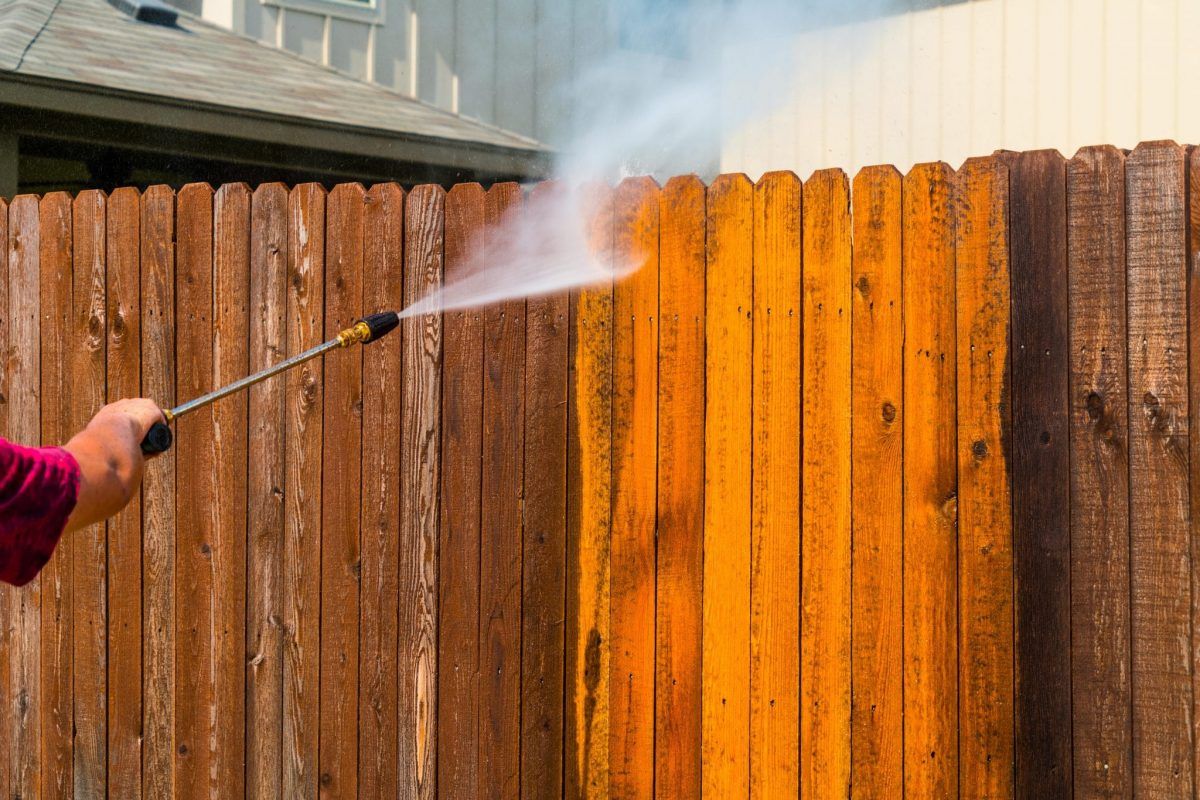
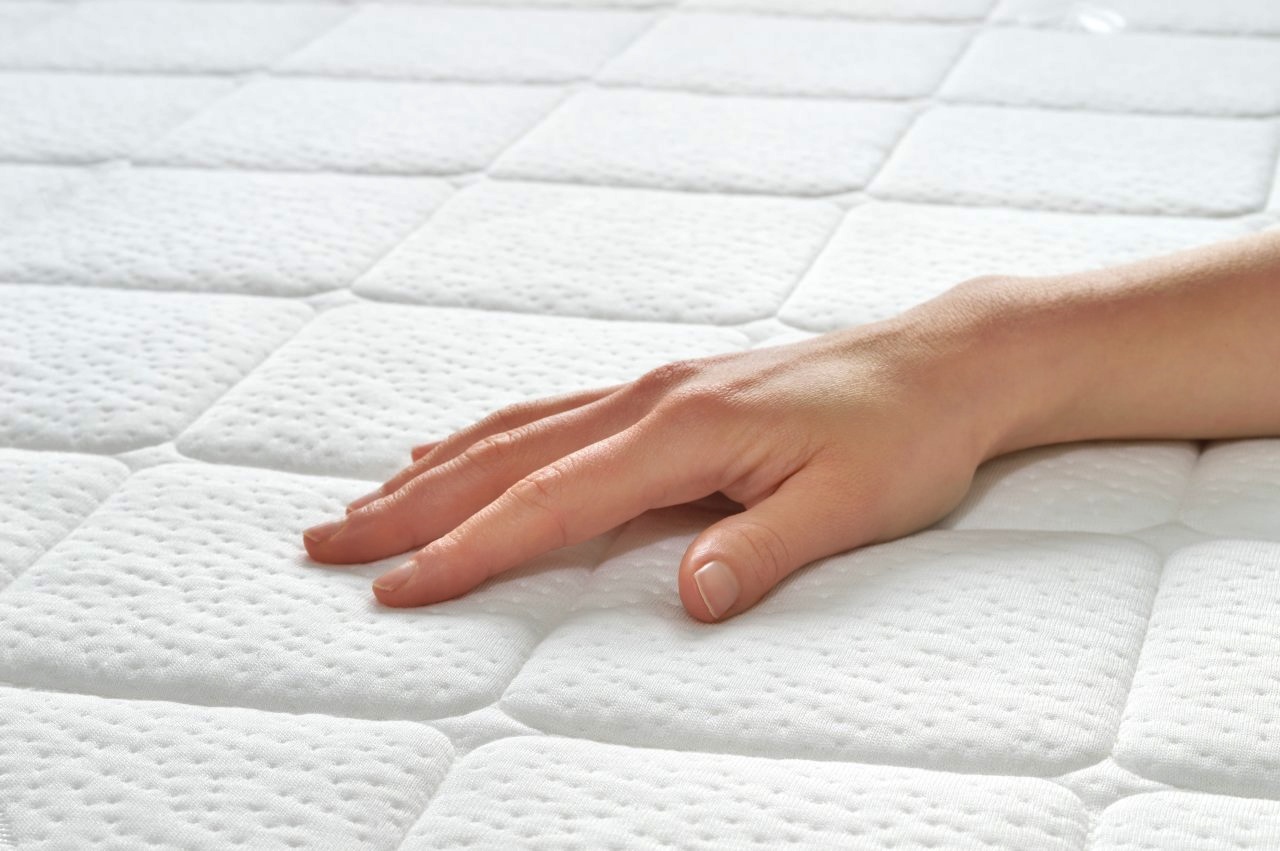

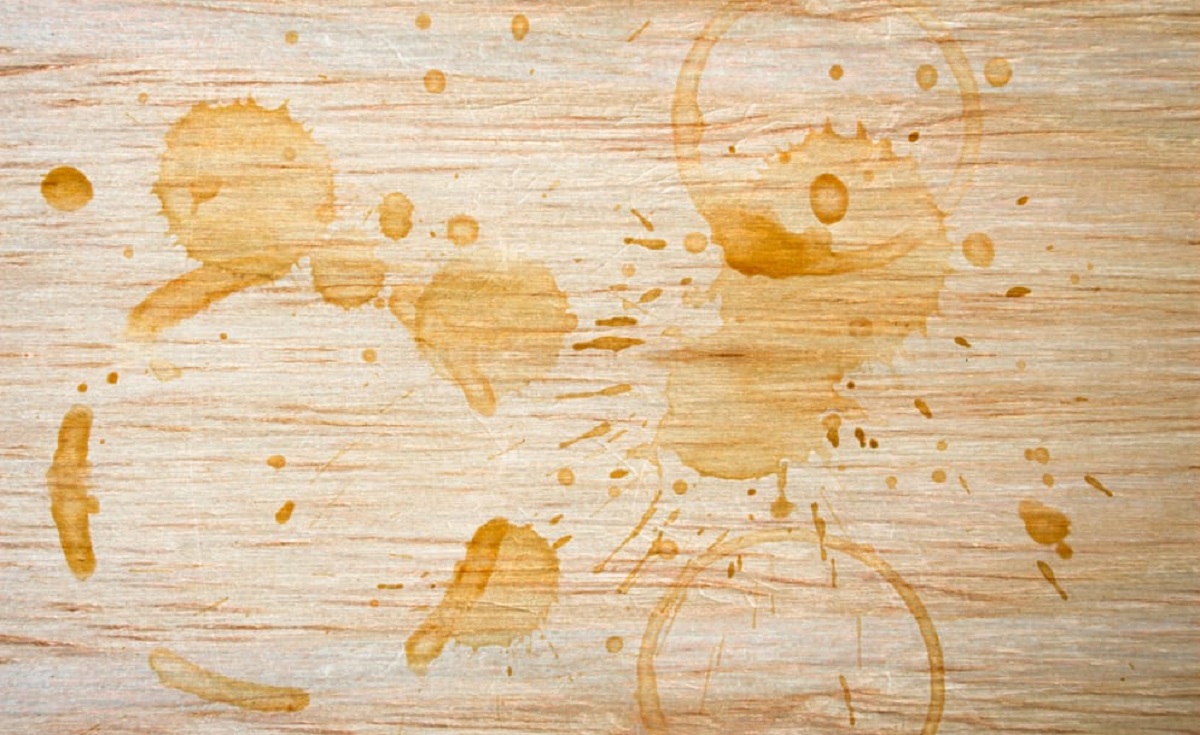


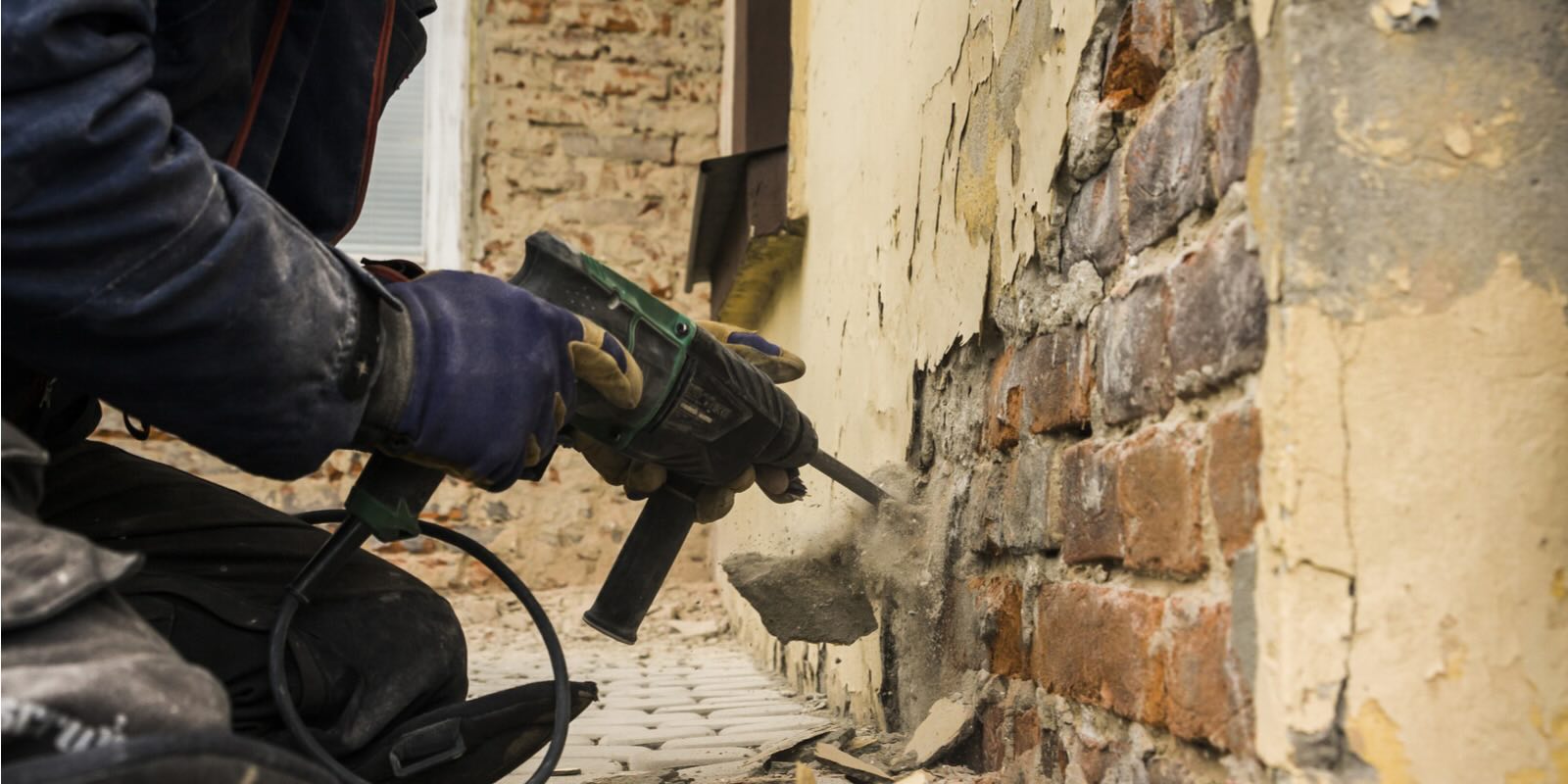

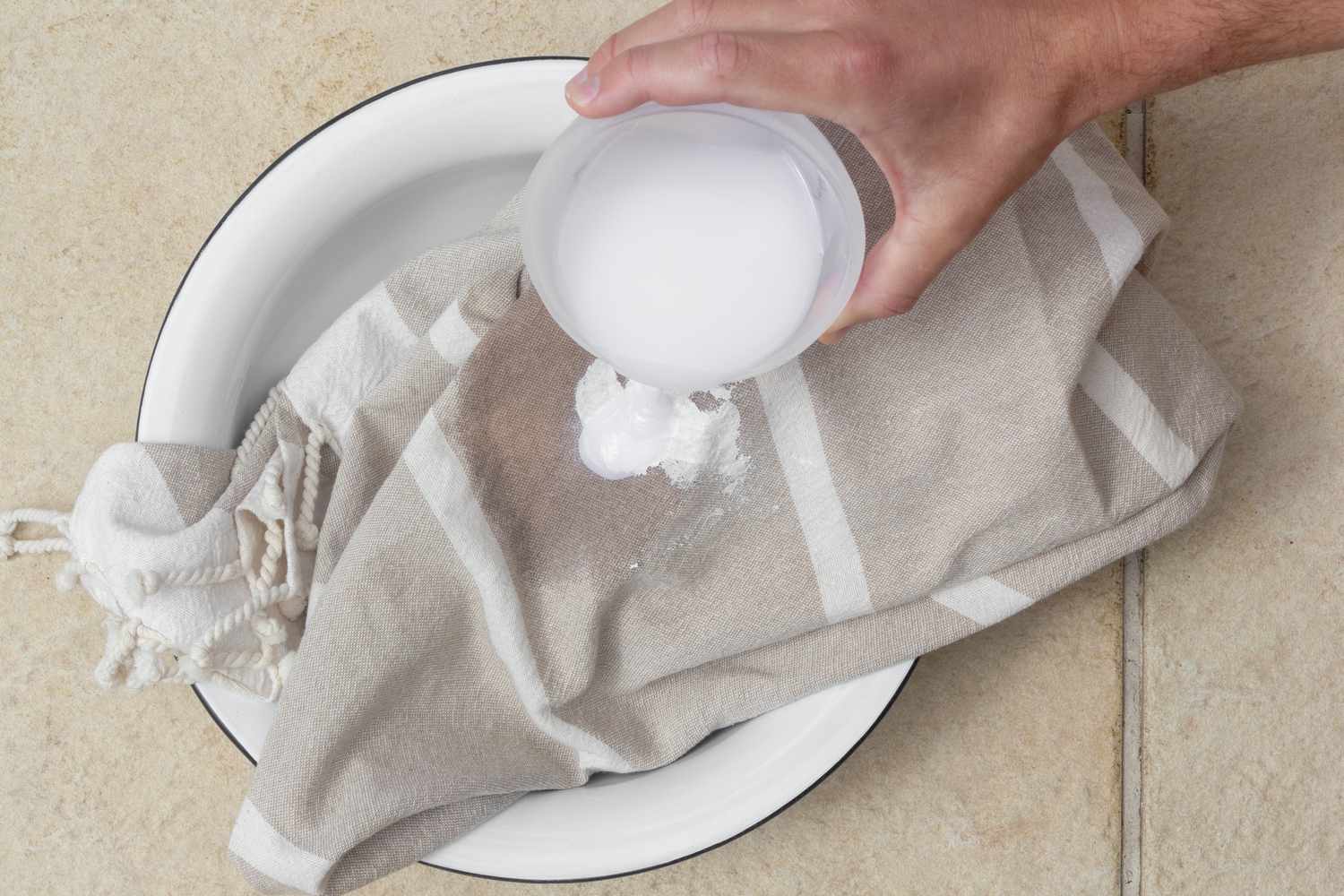


0 thoughts on “The Ultimate Guide To Removing Every Type Of Fabric Stain From Clothing”